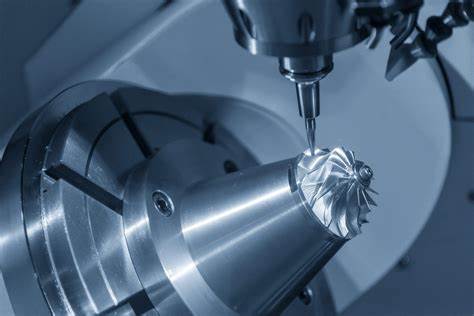5-axis machining technology is a key equipment that can implement high-end CNC machine tools and molds in industrial fields where precision machining is a large demand. The quality level of mold products is largely affected by CNC equipment. In the fierce market competition environment, the manufacturing industry is facing the pursuit of shorter production cycles, higher processing quality, and faster product modification processing. capabilities, and the challenge of lower manufacturing costs, so 5-axis machining technology has attracted much attention. This article will discuss with you in depth the principles and scope of application of 5-axis machining technology, helping you to more easily understand how to introduce 5-axis machining technology and bring transformation opportunities to enterprises.

What is 5-axis machining?
5-axis machining is an advanced CNC machine tool processing technology that can simultaneously control the movement of the workpiece on the three linear axes of X, Y, and Z as well as the two rotary axes of A and B. This technology offers a high degree of flexibility and precision, allowing us to produce parts of high complexity and demanding precision requirements.
How it works
When metal cutting, huge cutting and friction forces will cause the workpiece to move, so a “shaft” is needed to fix the workpiece. Common 3-axis machine tools have only three degrees of freedom in linear movement and can handle structures along the tool axis, but cannot handle side structural features. Five-axis machining uses at least five coordinate axes (X, Y, Z, A, B, three linear coordinates and two rotational coordinates) under the coordinated control of the computer numerical control system to allow each axis to have independent The controller and motor drive system can perform synchronous motion processing.
Advantages of 5-axis machining
Ability to process complex geometries: 5-axis machining technology can complete multi-faceted processing in a single setup, avoiding errors caused by multiple fixture changes.
Improve production efficiency: 5-axis machining can reduce interruptions and fixture replacement time during the machining process, thereby improving production efficiency.
Shorten production cycle: 5-axis machining can shorten the entire production cycle by reducing setup time during machining.
Improve machining accuracy: 5-axis machining technology can also improve machining accuracy by reducing errors in processing.
Extended tool life: During the 5-axis machining process, the contact area between the tool and the workpiece is smaller, which helps to reduce the tool wear rate and extend the tool life.
The above is a detailed introduction to CNC 5-axis machining. I hope it will give everyone a clearer understanding of the relevant knowledge of 5-axis machining.
PROTO MFG provides a wide range of manufacturing capabilities and other value-added services for all of your prototyping and production needs. Visit our website to learn more or to request a free, no-obligation quote.